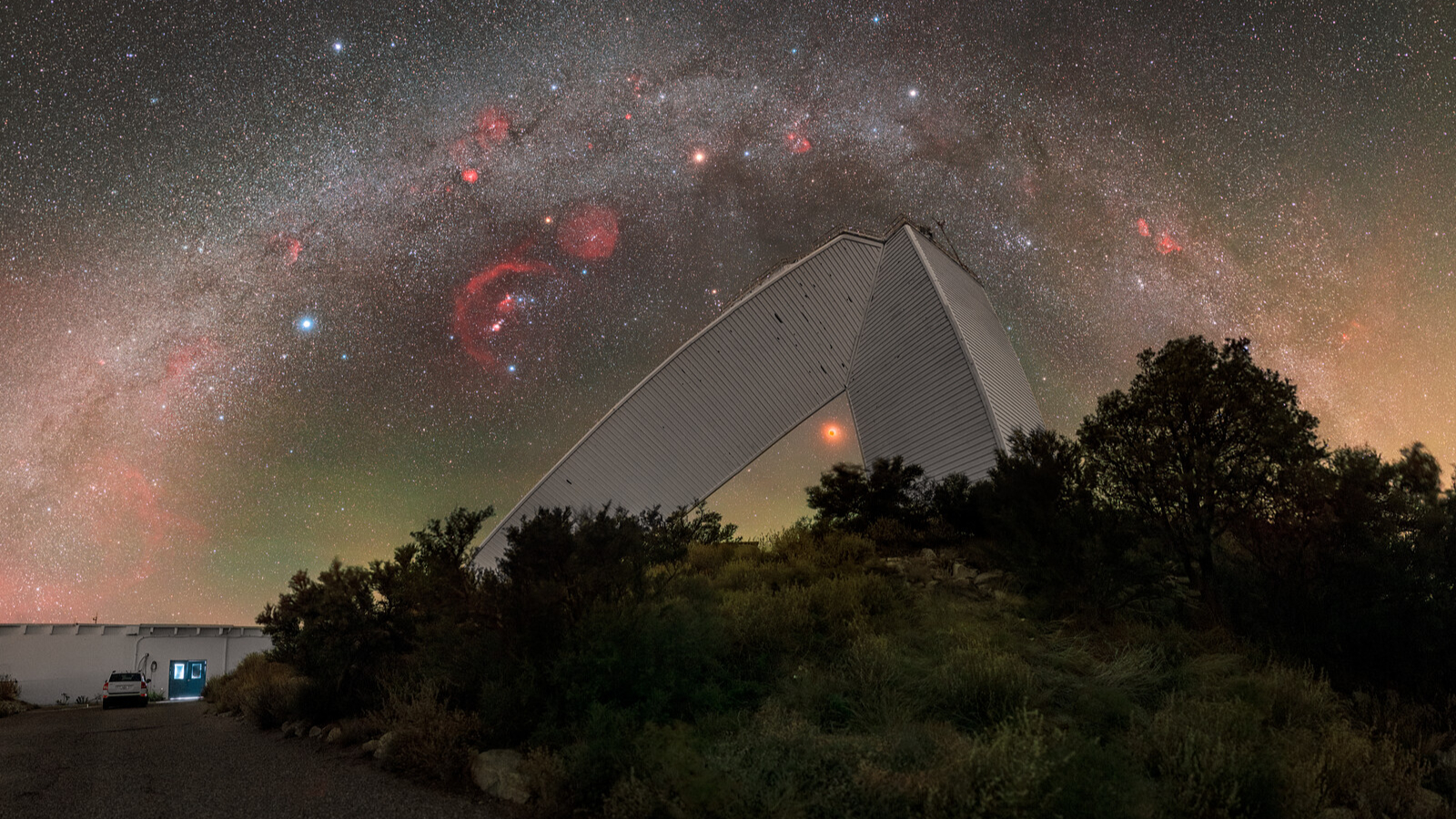Noctilucent clouds: A complete guide to the rare 'night-shining' clouds
These strange noctilucent clouds thrill skywatchers throughout the summer months.
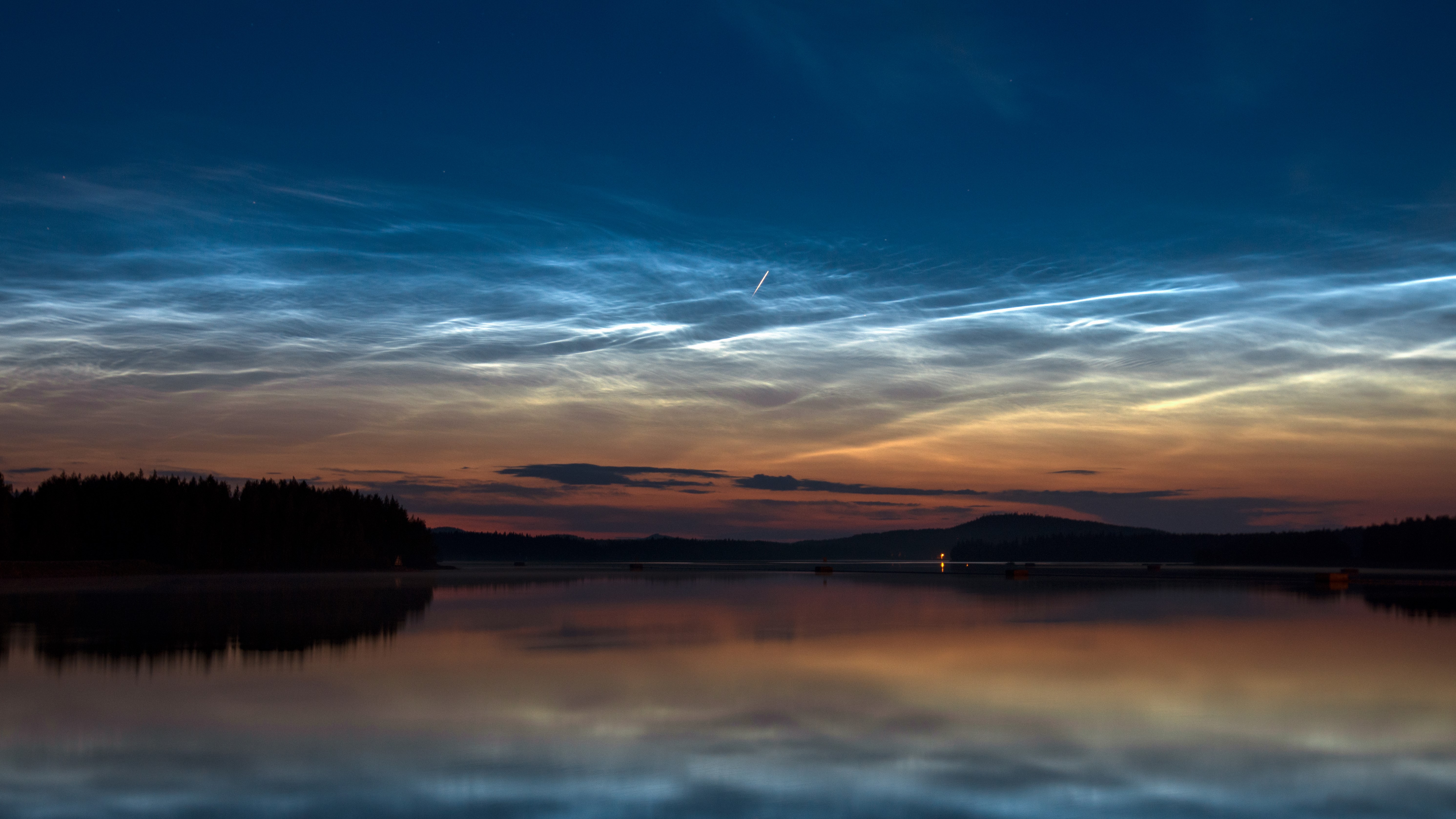
Noctilucent clouds are rare high-altitude clouds visible only under certain conditions. They form during the summer months and appear after sunset as delicate, wispy blue or silver streaks across the sky.
The name noctilucent is derived from the Latin words "nocto" and "lucent" which translates to "night" and "shining" respectively, according to Merriam Webster. They are sometimes referred to as polar mesospheric clouds.
These unique night-shining clouds captivate skywatchers during the summer months. In this article we delve into what they are, how they form, and how you can see them for yourself.
Related: Astrophotography for beginners. How to shoot the night sky
Noctilucent cloud formation and location
Most of our planet's clouds form in the Earth's atmosphere layer closest to Earth — the troposphere — at altitudes between about 1.2 miles (1.9 kilometers) and 11.4 miles (18 km). But noctilucent clouds take things to a whole new level (quite literally).
Noctilucent clouds are located in the third layer of Earth's atmosphere — the mesosphere — where they form between 47 to 53 miles (76 to 85 km) above the surface, making them Earth's highest clouds.
For noctilucent clouds to form they require water vapor, dust and very low temperatures (like many clouds), according to the U.K. Met Office.
Noctilucent clouds are visible during the summer months when the mesosphere is at its coldest at the poles, according to Earth Sky. When temperatures are low enough, water vapor freezes onto the dust particles, forming ice crystals. When the sun illuminates them from below, these ice crystals reflect the sunlight and appear as electric blue wisps in the night sky, reaching out toward the edge of space.
But where does all this dust come from in the mesosphere? According to the Met Office, mesospheric dust can originate from space as tiny meteors or come from Earth from volcanic eruptions or pollutant emissions. These strange clouds were first mentioned in 1885, two years after the Krakatoa volcanic eruption, according to ESA.
How to see noctilucent clouds
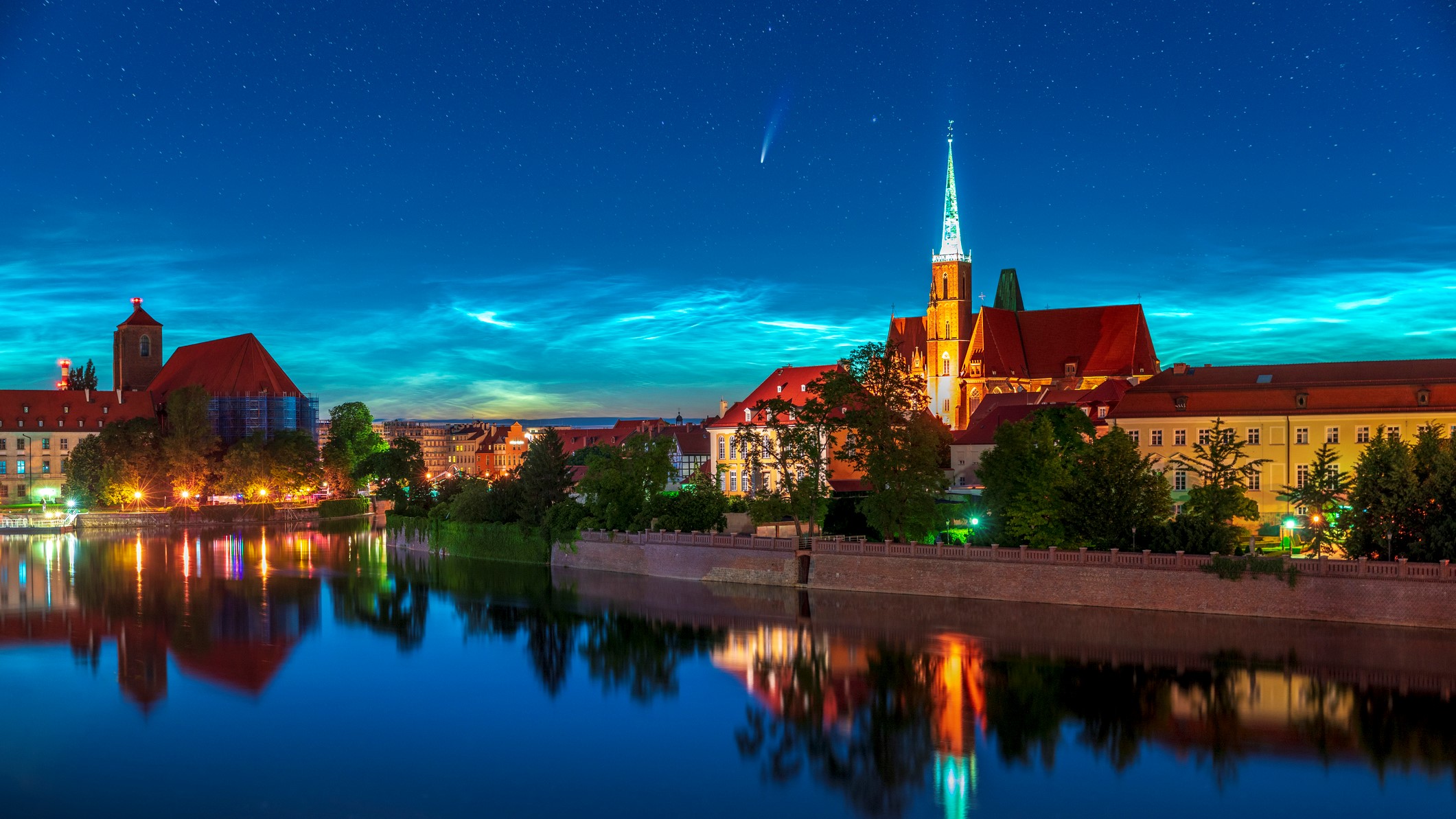
Not everyone is lucky enough to be in a position to see these night-shining clouds as they are only visible at latitudes between 45 degrees and 80 degrees north and south, according to the Met Office.
There is a relatively small observation window for noctilucent clouds as they are only visible after sunset during astronomical twilight during the summer months.
To increase your chances of spotting these impressive night-shining clouds, find a clear patch of sky after sunset. For some helpful tips and suggested camera settings, the travel photography site Meandering Wild has a useful article to help noctilucent cloud photographers. To record the dynamic beauty of these clouds you may also want to set up a low-light capable video camera to capture a timelapse.
Noctilucent clouds aren't just a wonder experienced by those of us on Earth — they also put on a show for orbiting astronauts on the International Space Station. In 2016, ESA astronaut Tim Peake captured an image of noctilucent clouds shimmering high above Earth's surface, from the orbital lab.
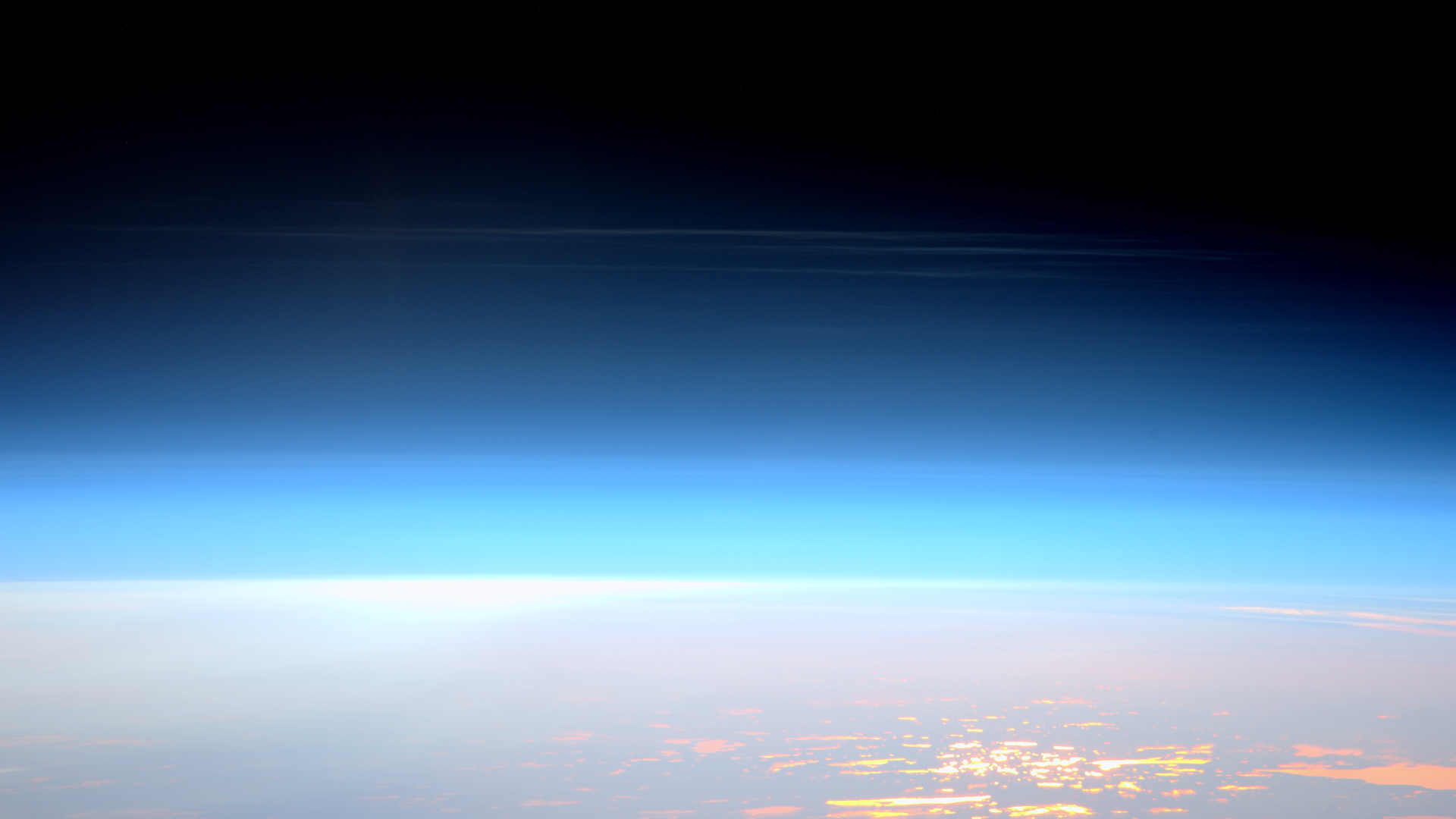
Noctilucent clouds Q&A with an expert
We asked David Hopper, a scientist with the National Centre for Atmospheric Science (NCAS) who is based at the RAL Space department, some frequently asked questions about noctilucent clouds.

David Hopper is a scientist with the National Centre for Atmospheric Science (NCAS) who is based at the Rutherford Appleton Laboratory (RAL) Space Department.
Why are noctilucent clouds interesting?
Noctilucent Clouds (NLCs) form at the incredibly high altitude of around 82 km [50 miles]. This is 70 km [43 miles] higher than virtually all other clouds and is literally at the edge of space. The atmosphere at this altitude is so insubstantial (the density is approximately one hundred thousandth of that at the Earth's surface) that it could be considered to constitute a reasonable "vacuum" at ground level.
What are noctilucent clouds made from?
NLCs are made from ice crystals, which makes them similar to the wispy cirrus clouds seen in the lower atmosphere. However, as a result of the very low density of the air in which they form, NLCs are much less substantial than cirrus clouds. This means that they can't be seen against the brightness of the daytime sky and only become visible during twilight hours.
How do they form?
The region in which NLCs form is not only insubstantial, but it is also very dry (water vapour concentrations don't rise above 10 parts per million by volume). Nevertheless, it can become exceptionally cold during the mid-summer months (between late May and early August in the northern hemisphere). This is the result of air rising, expanding, and cooling over the summer (i.e. sunlit) pole before spreading out to lower latitudes. Ice crystals can begin to form where the temperature drops below a "frost point" of approximately -125 °C.
What kind of conditions do noctilucent clouds indicate?
During the NLC season, temperatures typically drop below the frost point on a daily basis at latitudes polewards of 65°. However, these conditions become progressively less frequent as one moves to lower latitudes. They are extremely rare at latitudes below 50°. For this reason, NLCs are not typically seen on a daily basis. However, when they are seen, their presence indicates that the temperature has dropped below the frost point.
When can noctilucent clouds be seen and why?
Because they are so insubstantial, NLCs can't be seen against the brightness of the daytime sky. Nevertheless, because of their incredibly high altitude, they can remain sunlit even after the sun has dropped below the horizon at ground level. The sun needs to be at least 6° below the horizon before the sky is sufficiently dark for NLCs to become visible. The contrast will improve as the sun sinks even lower until the NLCs cease to be sunlit when the sun is more than about 16° below the horizon.
Are noctilucent clouds rare?
For someone within the optimal NLC-observing latitude band between 50° and 60°, NLCs should be visible at least several times each season. The biggest limiting factor is the presence of regular clouds in the lower atmosphere, which can be a particular problem in the British Isles. The next limiting factor is being outside at the right time. NLCs are visible more frequently during the dawn than the dusk, and so one typically needs to be up very early in order to have the best chance of seeing them.
Are noctilucent clouds appearing more frequently?
Scientists have found that the frequency of noctilucent clouds fluctuates each year due to changes in the atmosphere and solar cycle, but all in all the clouds are becoming increasingly common.
A study published in July 2018, in the scientific journal Geophysical Research Letters explains that the increased frequency of these night-shining clouds is due to the rise in greenhouse gas emissions, specifically, methane.
Methane is a potent greenhouse gas that produces water vapor — a key ingredient of noctilucent clouds — through chemical reactions, namely oxidization within the troposphere by the hydroxyl radical (OH), according to the Environmental Change Institute at the University of Oxford.
Throughout the period of the study, 1871 to 2008, the scientist found that methane emissions had more than doubled the amount of mesospheric ice present, thus increasing the likelihood of noctilucent cloud formation.
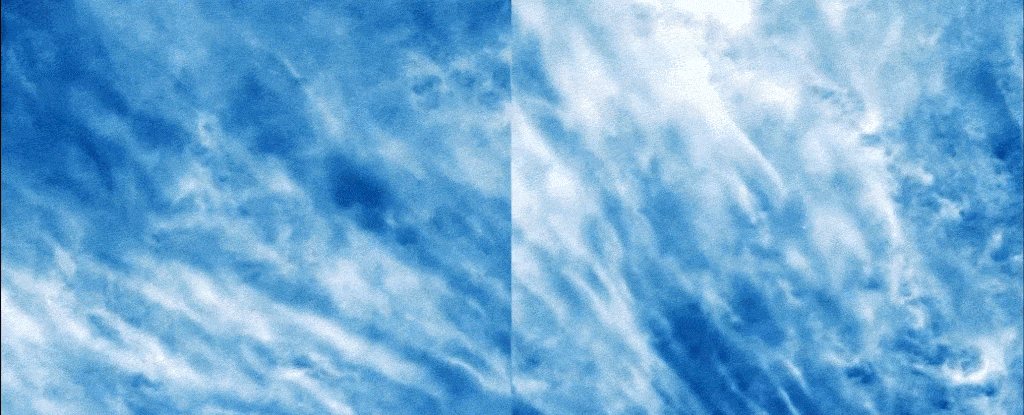
"People living in the mid to high latitudes now have a good chance of seeing noctilucent clouds several times each summer," Franz-Josef Lübken, an atmospheric scientist at the Leibniz Institute of Atmospheric Physics in Kühlungsborn, Germany, said in a statement. "In the 19th century, they were probably visible only once every several decades or so."
2022 was a particularly good year for noctilucent cloud displays as NASA's AIM (Aeronomy of Ice in the Mesosphere) spacecraft — with a primary goal to study how these clouds form — detected the highest increase in noctilucent cloud frequency in 15 years.
So why the sudden increase? The emerging theory is that rocket launches are to blame.
During a rocket launch, water vapor is released into the atmosphere. The water vapor then wafts up to the mesosphere, over the course of about ten days according to Cora Randall, a professor at the University of Colorado Boulder, in a statement on spaceweather.com.
"We're speculating that the spike might be due to extra water vapor transported to higher latitudes from rocket launches," says Randall. "But much more quantitative analysis would be required to confirm that or not."
Though only speculation, the timing seems to fit with a recent outbreak of noctilucent clouds occurring about 10 days after a series of rocket launches.
In June 2022 SpaceX launched three missions in just over 36 hours, the third being a launch of the Globalstar satellite on June 19. Approximately 10 days after the launch on June 30 an outbreak of noctilucent clouds was documented by spaceweather.com. Many took to Twitter in the days following to share their noctilucent cloud-watching experience.
Noctilucent clouds at midnight in north-central Alberta. pic.twitter.com/UDj22goK6pJuly 3, 2022
Lately we have enjoyed many clear nights. Here is a photo acquired in the early morning hours on June 30. Low to the horizon are Noctilucent Clouds with a weak auroral oval above it. A 2 min time lapse video from dusk to dawn can be seen here.https://t.co/3b5EjCTyvD@CalgaryRASC pic.twitter.com/zDHniuYnQiJune 30, 2021
Amazing. Beautiful. Superb. These are words many people use to describe one of the sky’s most beautiful displays: noctilucent clouds. And the time is right for Canadians to try to see them for themselves.June 30, 2022 at 01:00AM | By: Nicole Mortillaro https://t.co/97N6CYjfo0…June 30, 2022
A recent study using NASA's AIM satellite came to a similar conclusion that rocket launches and noctilucent cloud formation are related.
Researchers took things one step further to look at how the timing of rocket launches affected noctilucent cloud formation at specific latitudes. They found that morning rocket launches are partly responsible for the appearance of noctilucent clouds at lower latitudes, according to a statement from NASA.
"The analysis revealed a strong correlation between the number of launches that took place between 11 p.m. and 10 a.m. local time and the frequency of mid-latitude noctilucent clouds observed between 56 and 60 degrees north latitude." said the statement.
Noctilucent clouds are not the only pretty skyward side effect of rocket launches. Other captivating patterns in the sky have been reported by observers all around the world, including a strange blue spiral in New Zealand and 'space jellyfish' off the Florida coast.
Additional information
For more information on noctilucent clouds head over to the British Astronomical Association for a beginners' guide to the high atmosphere clouds. If you want more beautiful noctilucent cloud imagery check out NASA's AIM mission image gallery. Explore noctilucent clouds on other planets with this Earth Sky article about night-shining clouds on Mars.
Bibliography
Lübken, Franz-Josef, Uwe Berger, and Gerd Baumgarten. "On the anthropogenic impact on long-term evolution of noctilucent clouds." Geophysical Research Letters 45.13 (2018): 6681-6689.
American Geophysical Union. (2018, July 2). Climate change is making night-shining clouds more visible. Phys.org. Retrieved July 25, 2022, from www.phys.org/news/2018-07-climate-night-shining-clouds-visible.html
Climate science of methane. The Environmental Change Institute. Retrieved July 25, 2022, from www.eci.ox.ac.uk/research/energy/downloads/methaneuk/chapter02.pdf
How to find and photograph noctilucent clouds. Meandering Wild. Retrieved July 25, 2022, from www.meanderingwild.com/photographing-noctilucent-clouds/
Loff, S. (Ed.). (2017, August 7). Space station view of noctilucent clouds. NASA. Retrieved July 25, 2022, from www.nasa.gov/image-feature/space-station-view-of-noctilucent-clouds
Merriam-Webster. Noctilucent Cloud Definition & meaning. Merriam-Webster. Retrieved July 25, 2022, from www.merriam-webster.com/dictionary/noctilucent%20cloud
Noctilucent clouds. Met Office. Retrieved July 25, 2022, from www.metoffice.gov.uk/weather/learn-about/weather/types-of-weather/clouds/other-clouds/noctilucent
Noctilucent clouds: The most in 15 years! EarthSky. (July 3, 2022). Retrieved July 25, 2022, from www.earthsky.org/earth/night-shining-clouds-noctilucent-clouds-how-they-form-how-to-see-them
Silver linings. ESA. Retrieved July 25, 2022, from www.esa.int/ESA_Multimedia/Images/2020/07/Silver_linings
A sudden increase in noctilucent clouds. Spaceweather.com Time Machine. Retrieved July 25, 2022, from www.spaceweather.com/archive.php?view=1&day=03&month=07&year=2022
Thomas, V. (July 22, 2022). Rocket launches can create night-shining clouds away from the Poles. NASA. Retrieved July 25, 2022, from www.nasa.gov/feature/goddard/2022/sun/rocket-launches-can-create-night-shining-clouds-away-from-poles-nasa-aim-mission
Join our Space Forums to keep talking space on the latest missions, night sky and more! And if you have a news tip, correction or comment, let us know at: community@space.com.
Get the Space.com Newsletter
Breaking space news, the latest updates on rocket launches, skywatching events and more!

Daisy Dobrijevic joined Space.com in February 2022 having previously worked for our sister publication All About Space magazine as a staff writer. Before joining us, Daisy completed an editorial internship with the BBC Sky at Night Magazine and worked at the National Space Centre in Leicester, U.K., where she enjoyed communicating space science to the public. In 2021, Daisy completed a PhD in plant physiology and also holds a Master's in Environmental Science, she is currently based in Nottingham, U.K. Daisy is passionate about all things space, with a penchant for solar activity and space weather. She has a strong interest in astrotourism and loves nothing more than a good northern lights chase!
